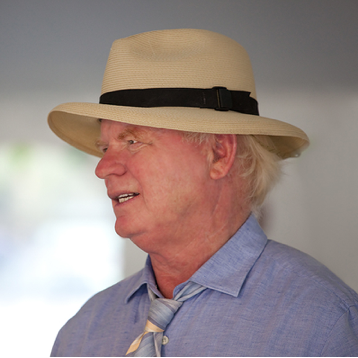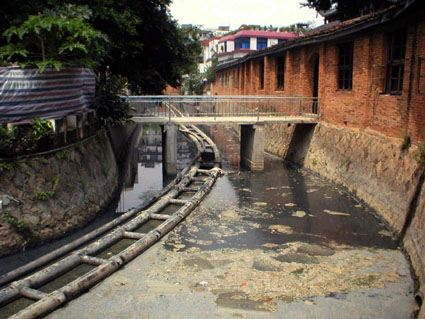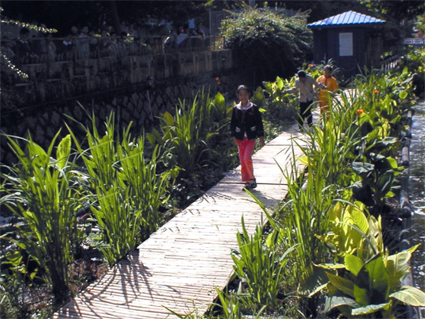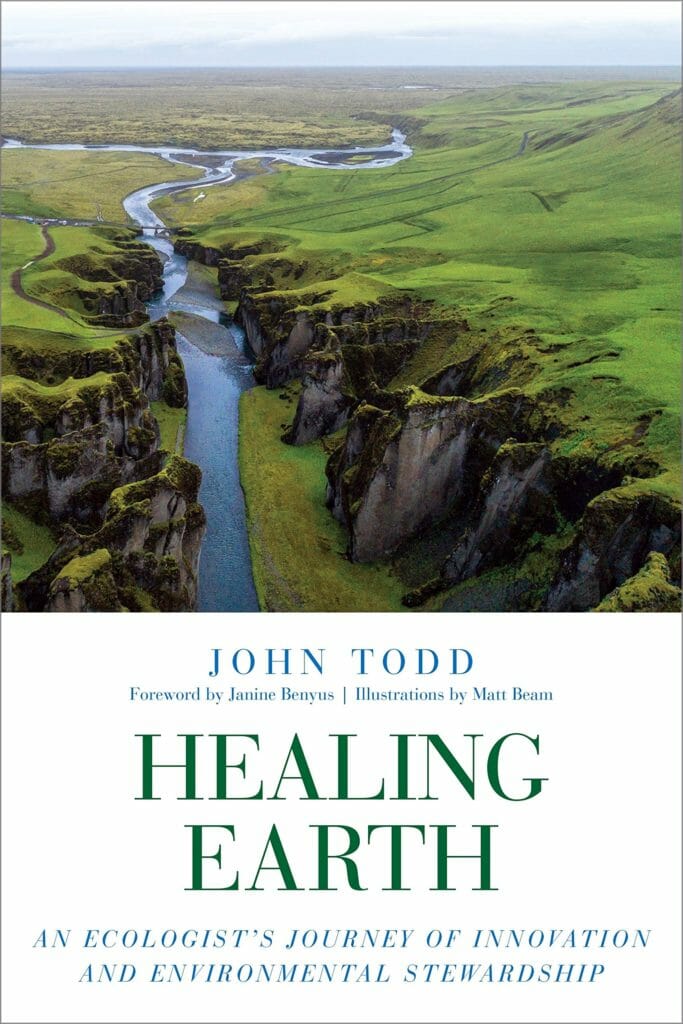Healing Earth: An Ecologist’s Journey of Innovation and Environmental Stewardship by John Todd
 Ecosystem restoration pioneer John Todd begins his new book Healing Earth: An Ecologist’s Journey of Innovation and Environmental Stewardship with “I am writing this book based on the belief that humanity will soon become involved in a deep and abiding worldwide partnership with nature. Millions of us will commit ourselves to reversing the long legacy of environmental degradation that threatens to destabilize the climate as well as the great ecologies that sustain life on Earth. We must develop a vast stewardship initiative, which will become the great work of our time. Fortunately, there are as many ways to serve the Earth as there are people willing to engage in this vast restoration project. It includes nothing less than stabilizing the planet’s climate as well as saving ourselves.”
Ecosystem restoration pioneer John Todd begins his new book Healing Earth: An Ecologist’s Journey of Innovation and Environmental Stewardship with “I am writing this book based on the belief that humanity will soon become involved in a deep and abiding worldwide partnership with nature. Millions of us will commit ourselves to reversing the long legacy of environmental degradation that threatens to destabilize the climate as well as the great ecologies that sustain life on Earth. We must develop a vast stewardship initiative, which will become the great work of our time. Fortunately, there are as many ways to serve the Earth as there are people willing to engage in this vast restoration project. It includes nothing less than stabilizing the planet’s climate as well as saving ourselves.”
There’s a one word term for Healing Earth: Geotherapy, regenerating the planet’s natural life support systems, like a doctor prescribes a cure to restore a sick patient to health based on a sound assessment and diagnosis. In his Foreword to the 2015 book Geotherapy: Innovative Methods of Soil Fertility Restoration, Carbon Sequestration, and Reversing CO2 Increase (T. J. Goreau, R. Larson & J. Campe. Eds.) John Todd pointed out “Our future as a civilization may depend on returning to our roots and the mineral as well as the organic materials that sustain them……. Perhaps we could use carbon a universal currency. People around the world could be paid to capture and sequester carbon, particularly in soils……Carbon sequestration is a global public good”.

Baima Canal in Fuzhou, China before restoration.
The failure of policy-makers to learn the wisdom of those nurturing the Earth is tellingly revealed when John Todd describes how they began with a dead canal full of oil, and turned it back to prolific life, only to have funding to monitor the results ended by the Environmental Protection Agency. He points out “Sadly, we no longer have the resources to study the details of the transformation in the canal in a measurable scientific way. The only instrument I can use are my own eyes. There is a vibrancy in the water and on the water, and I can see that the living technology continues to support the ecosystem in the canal, proving its cost-effectiveness year in and year out”. Most restoration pioneers have the same experience, everyone can see their results, but they lack funding for tools to measure and “prove” them, except for photographs.

Baima Canal in Fuzhou, China after restoration.
How to get there is the real challenge for the rest of this century. Todd envisions 25 year re-generational cycles in which productive soils are grown, and polluted waters healed, generating new goods and services for future generations. He envisions “NGOs, philanthropy, and governments” playing key roles in kickstarting the regenerative process. NGOs have the knowledge to implement these solutions, but until the financial and government sectors open their minds, learn from their mistakes, and join global regeneration efforts, their hands are tied behind their backs. Will enlightenment happen in time?
Thomas J. F. Goreau, PhD is a Board Director of Remineralize the Earth (RTE); the President of the Global Coral Reef Alliance, a non-profit organization for coral reef protection and sustainable management; and Coordinator of the United Nations Commission on Sustainable Development Partnership in New Technologies for Small Island Developing States. He works with tropical fishing communities and organizations around the world to restore their coral reefs and fisheries. Dr. Goreau was the researcher for RTE’s New Harmony Farm CSA Research Project. He determined optimal ratios of rock dust, biochar and compost for use in agriculture, to create foods with high nutrient density and maximum carbon sequestration. He did a significant study on remineralization showing more than eight times the biomass for trees grown in Panama with basalt rock dust over a five-year period, and showing increases in major macro and micro-nutrients. He is the main editor and co-author of Geotherapy: Innovative Methods of Soil Fertility Restoration, Carbon Sequestration, and Reversing CO2 Increase, a technical book on remineralization and biochar, published in 2015 by CRC Press.
Support us on Patreon
Thank you for joining us today! Please become a member of RTE and support us on Patreon. Unlike many larger organizations, we work with a team of determined and passionate volunteers to get our message out. We aim to continue to increase the awareness of remineralization to initiate projects across the globe that remineralize soils, grow nutrient dense food, regenerate our forests’ and stabilize the climate – with your help! If you can, please support us on a monthly basis from just $2, rest assured that you are making a big impact every single month in support of our mission. Thank you!








Kris Heather
April 7, 2019 (10:39 pm)
Hi everyone
As you know I live this concept and the enthusiasm in this article but I’ve spoken with server several friends and the question has been raised about where all this mineral will come from ? Can someone please help me explain to them why this is so important and what the environmental impact will be from taking the minerals out of the ground ?
Cheers Kris
Joanna Campe
April 8, 2019 (1:23 pm)
Hi Kris,
I appreciate your comment and I think we should probably do an article on this in the near future. Rocks are the most abundant resource on Earth, so we would be moving from an economics of scarcity (fossil fuels) to an era of abundance. There are millions upon millions of byproduct available from the aggregate and stone industries, and no extra energy is needed to grind the byproduct. The byproduct is just sitting there and getting those minerals into our soils is a great use for this nontoxic byproduct. It is less expensive for farmers who should be using local sources when possible. Unlike chemical fertilizers, if it’s applied with a large amount at once, another application would not be needed for another 5-10 years. That makes it very economical for the farmer because the transportation is the main cost.
Kris Heather
May 11, 2020 (7:08 am)
I just found this reply
Thank you so much
That makes me very happy